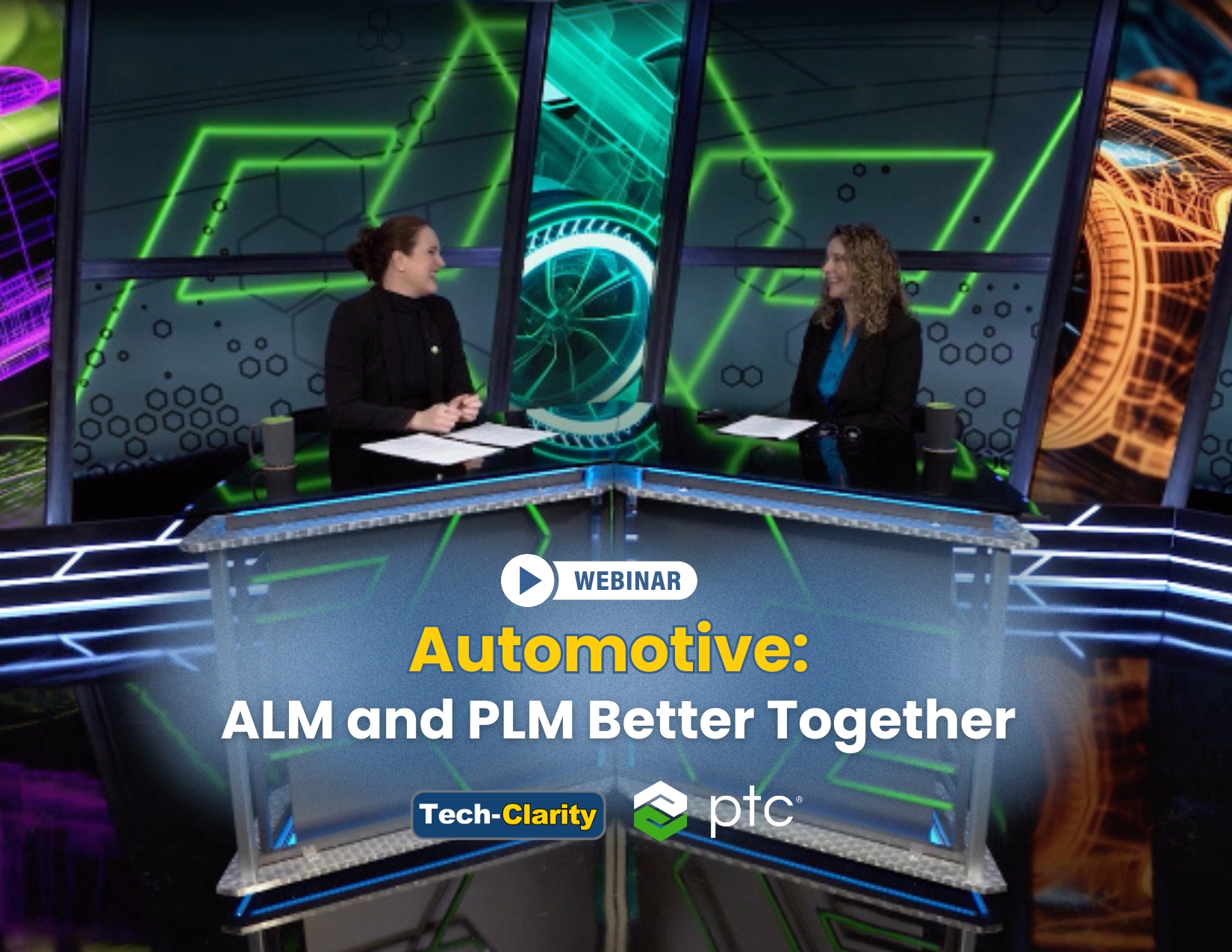What should Automotive companies consider when integrating ALM and PLM?
In today’s automotive industry, software is a critical differentiator. From advanced driver assistance systems (ADAS) to infotainment and over-the-air updates, software brings much opportunity for innovation. As we move toward software-defined vehicles, it is critical that hardware and software development become as integrated as possible. Yet, software is often managed in Application Lifecycle Management (ALM), while hardware remains in Product Lifecycle Management (PLM). This separation creates silos that slow development, increase risk, and hinder innovation. As vehicles become more connected, autonomous, and software-driven, and regulatory requirements tighten, it’s more important than ever to integrate ALM and PLM to establish a digital thread across the entire vehicle lifecycle.
In this 20-minute video, Michelle Boucher and PTC’s Meg Folcarelli discuss key considerations for Automotive companies to support the co-development of hardware and software. They cover:
- Current product development trends affecting Automotive companies
- The challenges and impacts these trends pose for the industry
- Best practices to tackle these challenges
- What to prioritize when integrating ALM and PLM
- Implementation advice
Watch the conversation here (no registration required) and learn more about Automotive ALM and PLM.
For more insight on integrating ALM and PLM in any industry, refer to our buyer’s guide.


